Heroin Addiction

Counselling
We’ll guide you
through the entire
period of your healing.

Intervention
Our center’s innovative
programs will surely
get you back on track!

Recovery
We provide an environment
uniquely suited
to support your healing.

Custom individualized program
Maximize your well-being with an individual plan made just for you
What is Heroin?
Heroin is an illegal drug that is made from morphine, a natural substance extracted from the seed of the opium poppy plant. Heroin is considered an opiate, but delivers a much stronger effect than morphine or opium. Heroin is a highly addictive drug used as an analgesic and recreational drug. It can be snorted, sniffed, smoked, or injected.
In 1898, Bayer, a German pharmaceutical company, was able to produce a drug 1.5 to 2 times stronger than morphine. The head of Bayer’s research department reputedly coined the new name heroin based on the German word “heroisch” which means “strong and heroic.” While they may not have been the first people to make heroin, Bayer was the company that led the commercialization of the drug.
Heroin was first marketed as a non-addictive treatment for tuberculosis and morphine addiction. Ironically, morphine was used to treat opium addiction in the 1850s. When people started to get addicted to morphine, heroin was introduced. It didn’t take long to discover that heroin was even more addictive than morphine.
What are the other names of heroin?
Heroin is also known by the following names:
- Diacetylmorphine
- Diacetylmorphine hydrochloride
- Diagesil
- Diamorf
- Diamorphine
- Heroin hydrochloride
- Hydrochloride, Diacetylmorphine
- Hydrochloride, Heroin
- Min-I-Jet Morphine Sulphate
What are the street names of heroin?
There are many street names for heroin, depending on the area and what it is mixed with.
- Big H
- Birdie powder
- Black
- Black eagle
- Black pearl
- Black stuff
- Black tar
- Boy
- Brown
- Brown crystal
- Brown rhine
- Brown sugar
- Brown tape
- Chiba
- Chieva
- China white
- Chiva
- Dope
- Dragon
- H
- He
- Hera
- Hero
- Heron
- Herone
- Horse
- Junk
- Mexican brown
- Mexican horse
- Mexican mud
- Mud
- Number 2
- Number 3
- Number 4
- Number 8
- Pluto
- Sack
- Scag
- Scat
- Skag
- Skunk
- Smack
- Snow
- Snowball
- Tar
- White
- White boy
- White girl
- White horse
- White lady
- White nurse
- White stuff
- Witch hazel

*All calls and messages are totally confidential.
Let’s Start Your Recovery!
Our sole mission is to provide you or your loved one with the personalized addiction treatment you need!
Spanish words for the drug include:
- Bombita
- Brea
- Blanco
- Bonita
- Caballo
- Calbo
- Carga
- Carne
- Chapopote
- Chatarra
- Chicle
- Cocofan
- Gato heroina
- La buena
- La chiva
- Polvo
- Tecata
- Tigre
- Tigre blanco
- Tigre del norte
- Vidrio
- Zoquete
What does heroin look like?
Pure heroin looks like a white powder with a bitter taste. It is often mixed or cut with other substances such as starch, sugars, quinine or powdered milk. It can also be brownish in hue.
Heroin can also appear black, which is popularly referred to as black tar heroin. Black tar can be sticky or hard as coal. The black color is a result of crude processing methods that leaves impurities in the drug. When heroin is not pure, it is usually diluted and injected into the body.
What is heroin used for?
Heroin has been used as a recreational drug for many years. Heroin use in the United States has dramatically increased, especially due to the opioid crisis. 80% of new heroin users admit that they started drug use with prescription opioids. When the price of prescription painkillers increased, many opioid addicts switched to heroin, which is a much cheaper and stronger alternative.
Like other types of opioids, heroin is a painkiller. It is considered a Schedule I drug in the United States, meaning it has no accepted medical use. Historically, it was used to alleviate acute pain including chronic pain, severe physical trauma, post-surgical pain or pain caused by end-stage cancer or terminal illnesses.
How does heroin work?
Heroin rapidly enters the brain and binds to the opioid receptors on cells. It activates the release of the neurotransmitter/hormone dopamine, sometimes called “the pleasure hormone.” This is why heroin use, like other opioids, gives a feeling of well-being. Heroin users report a surge of pleasure immediately after taking the drug. However, this pleasure is accompanied by feelings of drowsiness or mental confusion for several hours.
How strong is heroin?
Heroin is two to five times stronger than morphine. It enters the bloodstream very quickly, especially when it is snorted or injected, making its effect almost instantaneous.
Compared to other prescription opioids like hydrocodone and oxycodone, the effect of heroin is much stronger. Opioid addicts switch to heroin because they can get a much stronger high at a cheaper cost.
How does heroin use affect the brain and body?
Being a strong painkiller, heroin provides similar effects as other opioids, albeit much stronger. Heroin can have different effects on each person depending on the dose and what it is mixed with.
A small dose of heroin can produce a warm and fuzzy feeling while a larger dose can make you relaxed or feel drowsy. For some people, the first dose of heroin can make them dizzy or cause them to vomit.
What are the short and long-term effects of heroin?
Aside from the painkiller effect and feelings of pleasure, there are other short-term and long-term effects associated with heroin use.
Short-term effects:
- Dry mouth
- Severe itching
- Warm flushing of the skin
- Heavy feeling in the arms and legs
- Nausea and vomiting
- Clouded mental functioning
Long-term effects:
- Abscesses
- Collapsed or clogged veins
- Constipation and stomach cramping
- Damaged nasal tissue if the drug is sniffed or snorted
- Digestive issues
- Heart or circulatory infections
- Hypoxia – low oxygen in the blood
- Infection of the heart lining and valves
- Insomnia
- Irregular menstrual cycles for women
- Liver damage and disease
- Lung complications, including pneumonia
- Mental cloudiness or cognitive damage
- Mental and antisocial personality disorder
- Sexual dysfunction for men
- Sleep disorders and fatigue
How does one get addicted to heroin?
Because of its powerful effects, heroin is considered a highly addictive drug. Repeated use of heroin can lead to dependence and addiction. The brain and body becomes chemically dependent on the high heroin causes and experiences severe withdrawal symptoms without the drug.
How long does heroin stay in your system?
- Saliva test: 5 Hours
- Blood test: 6 Hours
- Urine test: 2-7 Days
- Hair test: 90 Days
Why is heroin dangerous?
Heroin is a very dangerous drug because an overdose can lead to respiratory failure, coma, and even death. If it is taken with other drugs or alcohol, the risk of overdose is higher. In recent years, there have been a rise in overdose deaths.
Another danger is that heroin is being made much stronger than before. While it has always been mixed with other substances to stretch out the supply of the product and squeeze more profits out of users, many heroin manufacturers are now focusing on making the heroin itself stronger. Heroin sold in the streets is often mixed with fentanyl or carfentanil, both very powerful drugs. Fentanyl is fifty times stronger than heroin while carfentanil is a hundred times stronger. Carfentanil is actually used as tranquilizers for large animals like elephants
What causes a heroin overdose?
Large doses of heroin can lead to overdose and even death. When you acquire heroin from the streets, you can’t sure of what you’re getting and how strong the effect will be on your body. Furthermore, if the heroin you took was laced with other drugs like fentanyl, it can be so strong that it’ll lead to an instant overdose.
Regular users of heroin can develop tolerance to the drug. This leads them to seek a higher dose to get the same feeling of euphoria as before.
What are the signs of heroin overdose?
When someone is suffering from a heroin overdose, respiratory failure can occur. Breathing can slow down or even stop. Other symptoms include:
- Blue lips and fingernails
- Coma
- Delirium
- Disorientation
- Drowsiness
- Dry mouth
- Loss of consciousness
- Tiny pupils
- Weak pulse and low blood pressure
How is heroin overdose treated?
Like other opioid overdose scenarios, a heroin overdose can be treated by administering Naloxene right away. Naloxene blocks the effects of heroin and other opioids. It is available as a nasal spray, injectable, or hand-held auto injector. While Naloxene is a good first-aid treatment, a person experiencing an overdose must be brought to the emergency room for additional medical support.
What are the withdrawal symptoms from heroin?
After heroin use, withdrawal symptoms may begin within a few hours, peaking 24 to 48 hours after the last use. These symptoms may last for a week, but some users may continue to experience symptoms months later.
Withdrawal symptoms may include:
- Cold Flashes
- Diarrhea
- Insomnia
- Muscle and bone pain
- Restlessness
- Vomiting
If you or a loved one is struggling with heroin addiction, seek professional help. Contact Nova Vitae Treatment Center today to learn about safe and effective ways to recover from heroin abuse. We are happy to provide a no-cost, no-obligation consultation with one of our experienced treatment advisors.
Important Steps to Addiction Rehabilitation
Treatment Programs

“Inpatient” then means that the patient needs to be admitted to an addiction treatment center for therapy and detox, typically because he/she needs to be closely monitored.

Intensive outpatient programs (IOPs) are treatment programs used to address addictions, depression, eating disorders, or other dependencies that do not require detoxification or round-the-clock supervision.

Medication-assisted treatment (MAT) is the use of medications in combination with counseling and behavioral therapies, which is effective in the treatment of opioid use disorders (OUD) and can help some people to sustain recovery.

Outpatient rehab is a form of alcohol or drug rehabilitation that allows patients to live at home (or in another safe and therapeutic environment, such as sober living)

Partial hospitalization provides a structured program of outpatient psychiatric services as an alternative to inpatient psychiatric care.

Sober living houses (SLHs) are alcohol and drug free living environments for individuals attempting to abstain from alcohol and drugs

A men’s rehab program is dedicated to helping men overcome drug and alcohol addiction.

Through gender-specific treatment, Redemption Addiction Treatment Center helps address key issues and obstacles that women face in their early recovery.
We Accept Insurance





Our rehabilition services
Alcohol addiction is a chronic relapsing disorder associated with compulsive alcohol drinking.
Drug addiction, also called substance use disorder, is a disease that affects a person’s brain and behavior.
Some people are apprehensive to quit drinking due to withdrawal symptoms, but alcohol detox is the first step in treating alcoholism.
A dual diagnosis treatment center helps people get treatment for mental illness and an addiction at the same time.
Home Detox Services for those who would prefer to avoid treatment in a hospital or clinic.
Mental health programs should include case management, rehabilitation, housing programs, and other support services.
Our Clients Say About Heroin Addiction
Frequently Asked Questions About Heroin Addiction
How long does it take to be detoxed from alcohol or other drugs?
Depending on several factors including physical health, drug of choice, history of use, and other evaluations,… the shortest detoxification program is 3 days. On average, most patients will complete detox in a very short 5-7 days.
Do I have to spend the night anywhere?
No, our treatments can be completed at our office and at your home, making it easy to adjust around family and work schedules, and to custom tailor a program that meets your needs.
Do you take health insurance?
Yes we do. Your intake coordination will include obtaining your insurance information and verifying eligibility and coverage benefits.




















